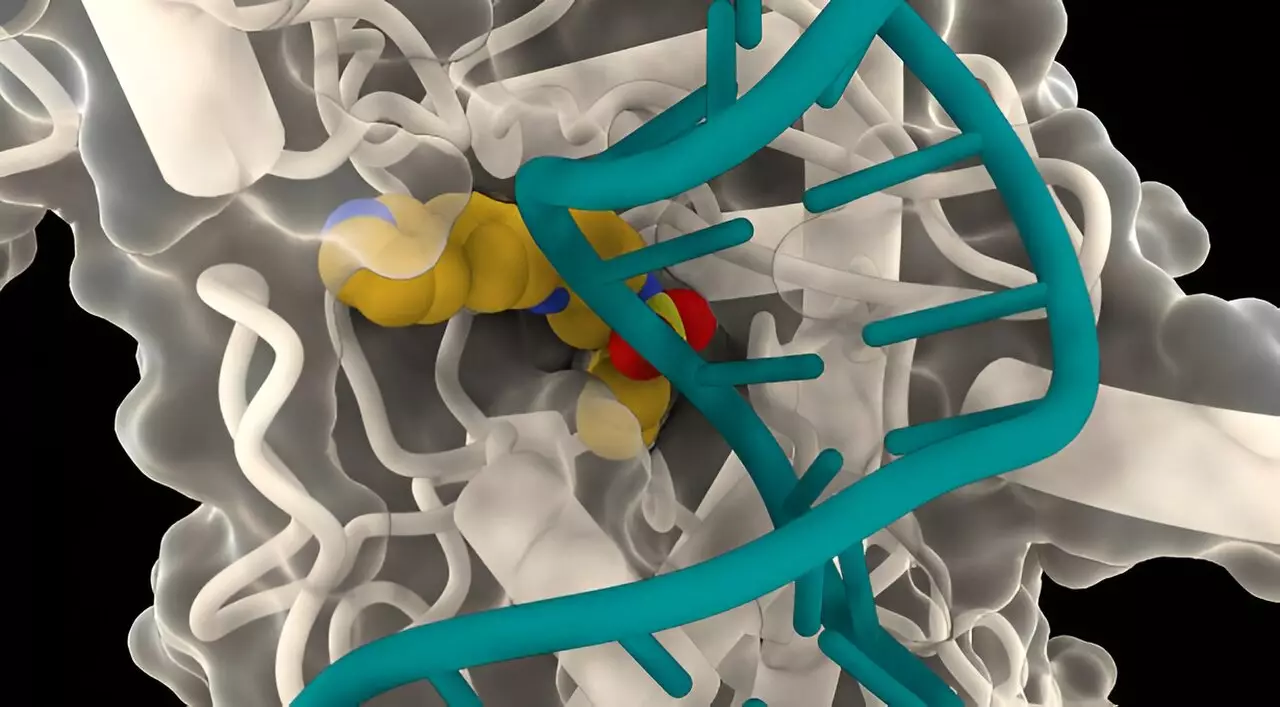The innovative project aimed at re-purposing existing drugs for their potential as antibiotics has resulted in the discovery of a highly promising candidate with a potent and unique way of killing drug-resistant bacteria. The collaboration between the University of Leiden, the Netherlands, and the John Innes Centre, UK, screened a chemical library of 352 small molecules for antimicrobial activity. These molecules, previously used in human therapies for cancer, were untested for their ability to combat harmful bacteria such as Escherichia coli. Out of the 12 compounds identified to inhibit bacterial growth, the most potent one, LEI-800, exhibited antimicrobial activity against E. coli and K. pneumoniae, two gram-negative bacteria responsible for hospital-acquired infections.
Researchers discovered that the compounds were able to kill the harmful bacteria by targeting the bacterial enzyme DNA gyrase. This enzyme is essential for bacterial growth as it breaks and rejoins DNA to remove knots and entanglements. The unique aspect of LEI-800 was its ability to bind to E. coli gyrase and inhibit it by preventing the enzyme from cutting DNA. The use of cryo-EM microscopy confirmed this unprecedented mode of action, setting the stage for the development of a new class of molecules targeting drug-resistant gram-negative bacteria.
The urgent need for new antibiotics to combat drug-resistant bacteria, particularly gram-negative strains, is a global health crisis. The development of LEI-800 provides hope for the creation of novel antibiotics to address this growing concern. Dr. Dmitry Ghilarov from the John Innes Centre emphasizes the significance of repurposing existing compounds for antibiotic development as it eliminates the costs associated with synthesizing new libraries. The discovery of LEI-800’s unique binding pocket offers a potential additional line of defense when used in conjunction with existing antibiotics.
The success of this study opens doors for future discoveries in antibiotic development. Dr. Ghilarov highlights the potential of repurposing existing drugs and the vast opportunities it presents for drug discovery. The complexity of biology and the diverse proteins within cells provide a rich landscape for finding new targets for drug development. The next steps for this research involve further optimization of LEI-800 and progressing towards clinical trials and commercialization.
Lessons from Nature
The concept of repurposing drugs is not new and has been a fundamental aspect of drug discovery. Examples such as aspirin’s role in anti-blood clotting and sildenafil’s journey from a blood pressure medication to an erectile dysfunction drug demonstrate the versatility of existing compounds. Nature itself has been a prolific source of medicines, with many anti-cancer drugs derived from soil bacteria. The study’s findings further underscore the potential for uncovering novel drug candidates by leveraging existing compounds in innovative ways.
The innovative approach taken by the University of Leiden and the John Innes Centre in repurposing existing drugs for antibiotic development has yielded promising results. The discovery of LEI-800 and its unique mechanism of action against drug-resistant gram-negative bacteria paves the way for a new class of antibiotics. This study not only addresses the urgent need for novel antibiotics but also highlights the value of repurposing existing compounds in drug discovery. The potential for further discoveries in antibiotic development using this approach is vast, offering hope in the fight against antibiotic resistance.


Leave a Reply